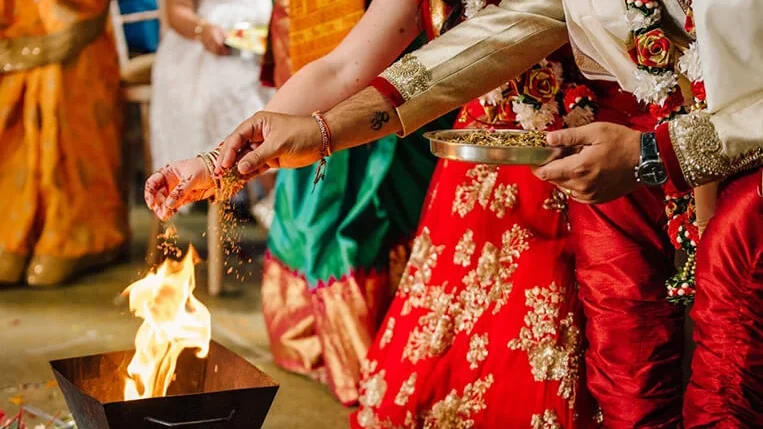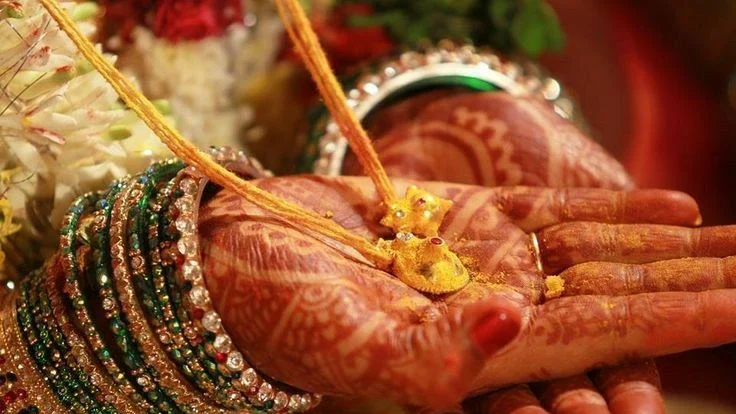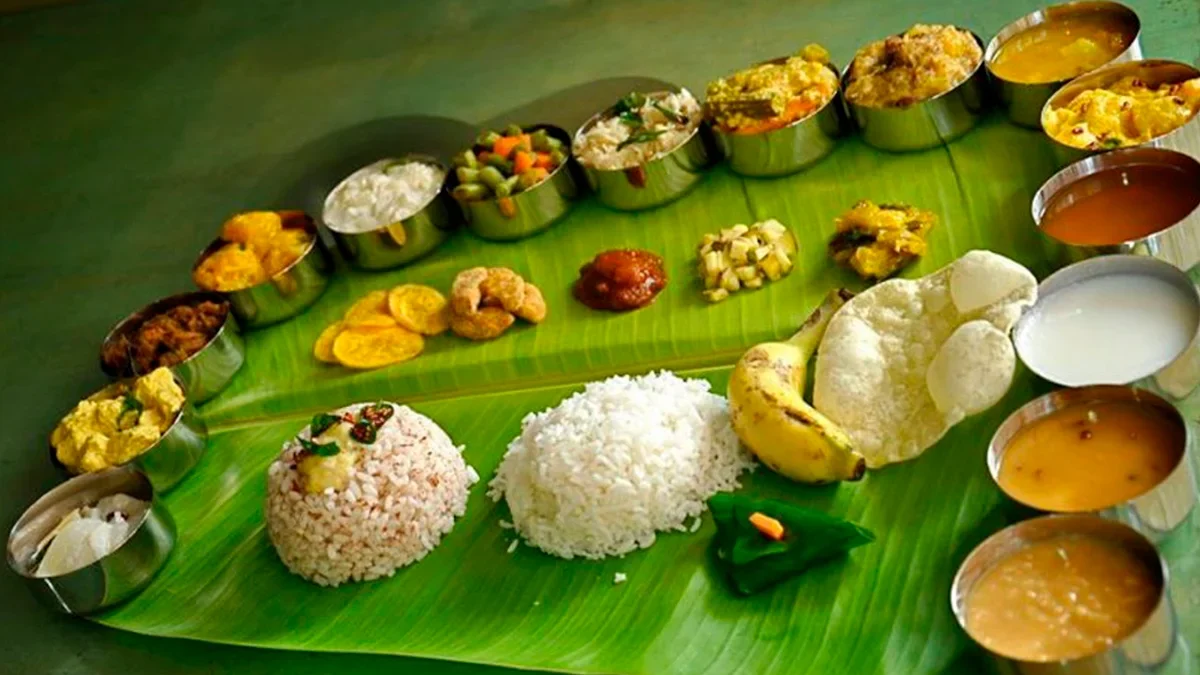With centuries of traditions and practices that make them special and sacred, South Indian weddings are steeped in tradition and cultural heritage. In the Tamil, Telugu, Kannada, and Malayali communities, weddings are a lavish celebration of spirituality, culture, and familial ties rather than merely a union of two people.
Similarities and Differences in South Indian Weddings Among Tamil, Telugu, Kannada, and Malayali Weddings show that even though these weddings have a lot in common, such as their focus on astrology, rituals involving sacred fire, and traditional dress, they also differ in a few key ways.
In this article, we will explore the key similarities and differences among these four wedding traditions, shedding light on the rich heritage and significance behind each of these beautiful customs.
5 Similarities in South Indian Weddings
1. Pre-Wedding Rituals and Astrology
Astrological beliefs play an integral role in every wedding celebration among the three wedding traditions. Families turn to astrologers who use horoscope matching as well as select the best wedding time known as muhurtham. Betrothal ceremonies as well as Nischayathartham (confirmation of marriage) and engagement rituals take place before weddings.
2. Kashi Yatra Tradition

At Tamil and Telugu and Kannada Brahmin weddings families perform Kashi Yatra which becomes a moment when the groom plays a role of renouncing material life but his future father-in-law ultimately persuades him to accept marriage.
3. Mangalsutra Ceremony

All cultures within this region perform a ritual tying of the traditional marriage necklace known as Thali or Mangalsutra. The wedding ceremony includes Mangalsutra where both bride and groom create their marital union thereby establishing a united bond which becomes the sacred supreme moment throughout the entire wedding experience.
Visit our Instagram page for more details.
4. Sacred Fire Ritual (Homam)

The marriage ceremonies unfold before a sacred fire while Vedic hymns sound during the rituals led by priests. The sacred fire serves as a sign from God delivering blessings for a fortunate future together as man and wife.
5. Reception and Post-Wedding Celebrations
The newlyweds organize large reception events to welcome relatives and friends who bless them after their marriage. All these religions share comparable traditions after marriage which involve welcoming the new bride at the groom’s residence (grihapravesham).
5 Differences in South Indian Weddings
1. Wedding Attire

At Tamil wedding ceremonies, the bride selects a colorful Kanjeevaram silk saree with abundant gold borders, and the groom wears a white veshti combined with angavastram. Telugu bridal attire includes pattu (silk) sarees with gold jewelry for the bride, while the groom wears a white dhoti along with a silk shawl.
Wedding customs in Kannada culture have brides wearing Nauvari or Kanjeevaram silk sarees while grooms wear white or cream-colored dhoti under their silk shawl. During Malayali weddings both brides choose Kasavu sarees (cream with gold borders) while grooms use mundu combined with a white shirt.
2. Wedding Rituals and Ceremonies
The Hindu Tamil wedding follows Kashi Yatra as the opening ritual before moving onto Maalai Maatral which represent the bride and groom exchanging flower garlands followed by Thali tying and the Saptapadi where seven steps occur before the sacred fire. Telugu wedding rituals begin when the groom receives Kanyadanam foot washing then proceeds to Jeelakarra Bellam in which the couple share cumin and jaggery paste while tying Mangalsutra.
Among Kannada wedding traditions the important steps include seeking ancestral blessings through Dev Karya and performing Kaashi Yatre and Saptapadi. Malayali wedding ceremonies remain streamlined yet focused on the groom placing the wedding necklace and three sacred flame laps by the couple
3. Significance of the Mangalsutra (Thali)

The Tamil Thali includes symbols of Goddess Lakshmi or Shiva because these elements symbolize divine blessings. The Telugu Thali consists of two small golden discs secured by a yellow string representing marital commitment. Traditional Kannada Thali goes by the name Mangalya formed by two gold pendants connected with a spiritual thread.
The Malayali Thali exists in two forms: Minnu contains a leaf pendant adorned with a Christian cross during Catholic weddings or features a basic gold ornament for Hindu celebrations.
4. Wedding Food and Feasting

During Tamil Weddings guests receive their food plated on banana leaves with sambar, rasam, kootu, poriyal, payasam and numerous types of rice. A Telugu wedding reception provides guests with Andhra style spicy dishes that include pappu (dal) and pulihora (tamarind rice) alongside various curries.
During Kannada Weddings bisibele bath together with kosambari and mysore pak and obbattu represent the most sought-after dishes. Malayali wedding feasting customs include a traditional Sadya feast layout with rice accompanied by avial and thoran and pachadi and sambar and payasam.
5. Wedding Duration and Simplicity
A Tamil or Telugu wedding typically expands across two to three days together with diverse pre-wedding and post-wedding ritual activities.
Typical Kannada weddings span one day although Brahmin weddings may continue longer. The ceremony time for Malayali weddings stays brief since they transpire in one hour.
Conclusion
In conclusion, Similarities and Differences in South Indian Weddings highlight that although the spiritual and cultural significance of weddings in these communities is very similar, each tradition is unique due to its own unique customs. Every ceremony has ingrained values that represent South India’s varied traditions, whether it be the lively celebrations of a Kannada wedding, the elegant simplicity of a Malayali wedding, or the intricate procedures of a Tamil or Telugu wedding.
FAQ
What role does music play in South Indian weddings?
Music plays a crucial role, with traditional Nadaswaram and Carnatic music setting the spiritual ambiance. Telugu weddings often include folk songs, while Malayalam weddings sometimes feature temple percussion performances.
Are there specific gifts exchanged at these weddings?
Yes, gifts like silk sarees, gold jewelry, and betel leaves with nuts are common. In some traditions, the bride receives silver lamps or utensils as part of her wedding gifts.
Do these weddings have any unique games or fun traditions?
Yes, games like the groom finding a hidden ring in a pot of water (a Tamil and Telugu tradition) or playful negotiations between the bride and groom’s families are common.
How do South Indian weddings differ from North Indian weddings?
South Indian weddings are temple-centric, focusing on Vedic rituals, while North Indian weddings often feature grand processions, Mehendi ceremonies, and Bollywood-style celebrations.
Is there a difference in bridal makeup and jewelry styles?
Yes, Tamil and Telugu brides prefer heavy temple jewelry, Kannada brides wear traditional netti chutti (forehead ornament), while Malayali brides opt for a simpler gold look.
Are inter-state weddings common among South Indian communities?
Yes, with increased migration and modernization, inter-state South Indian weddings have become more common, blending traditions from different region

